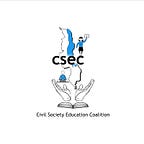BLENDED LEARNING: TRANSFORMING EDUCATION IN MALAWI
In the heart of Malawi, a subtle yet profound revolution is underway — one that promises to reshape the very essence of education. Malcolm X once said, “Education is the passport to the future, for tomorrow belongs to those who prepare for it today.” This sentiment rings particularly true as blended learning, a dynamic fusion of traditional teaching methods with the boundless possibilities of technology, takes center stage in Malawian schools. As we embark on this transformative journey, the eduhub column delves into the compelling narrative of blended learning, exploring its vast potential, confronting its challenges, and championing its cause for a brighter future.
Malawi, facing formidable educational challenges such as scarce resources, overcrowded classrooms, and a shortage of skilled educators, finds itself at a critical juncture where innovation can ignite significant transformation. The Malawi Education Sector Improvement Programme (MESIP) exemplifies the government’s robust commitment to revolutionizing education through the integration of digital technologies and fostering blended learning practices nationwide. Coupled with initiatives like distance and online learning, the Building Education Foundation through Innovation and Technology (BEFIT), and radio broadcast education, these efforts are expanding the educational landscape by offering scalable and diverse learning opportunities. As Bill Gates insightfully remarks, “Technology is just a tool,” underscoring the irreplaceable role of teachers as essential facilitators in this new educational paradigm. Their ability to motivate and collaborate with students is pivotal, proving that even amidst technological advancements, the true cornerstone of impactful blended learning is the teacher, serving both as a conduit and a crucial resource for meaningful educational engagement.
Blended learning isn’t merely a pedagogical shift; it’s a catalyst for change, unlocking a treasure trove of educational opportunities previously beyond reach. By harnessing the power of technology, students are empowered to embark on a journey of discovery, with access to a diverse array of resources tailored to their individual needs and interests. Moreover, blended learning transcends geographical barriers, bridging the gap in teacher shortages by extending the reach of education to even the remotest corners of Malawi. As Martin Luther King Jr. aptly stated, “The function of education is to teach one to think intensively and to think critically. Intelligence plus character — that is the goal of true education.”
Yet, amidst the promise of blended learning, lie formidable challenges that demand our attention. The digital divide looms large, casting a shadow over rural communities where internet connectivity and infrastructure remain elusive. Budgetary constraints further exacerbate the struggle, hindering efforts to procure essential tools and resources. Moreover, concerns about content quality and resistance to change among educators underscore the need for strategic intervention.
To surmount these obstacles and unleash the full potential of blended learning in Malawi, decisive action is imperative. William Butler Yeats once remarked, “Education is not the filling of a pail, but the lighting of a fire.” Investment in infrastructure, coupled with comprehensive teacher training programs, lays the foundation for success. Quality assurance mechanisms ensure alignment with educational standards, while community engagement fosters a supportive ecosystem for learning, both within schools and beyond. And, crucially, supportive policies and adequate funding prioritize equity and Inclusivity, ensuring that every child has the opportunity to thrive.
In conclusion, blended learning stands as a beacon of hope, illuminating the path towards a brighter future for education in Malawi. As Aristotle stated, “The roots of education are bitter, but the fruit is sweet.” As we stand on the cusp of transformation, let us heed the call to action, rallying together to overcome adversity and champion the cause of blended learning. For in the union of tradition and technology lies the power to reshape minds, empower futures, and pave the way for a more inclusive and digitally empowered education system.
